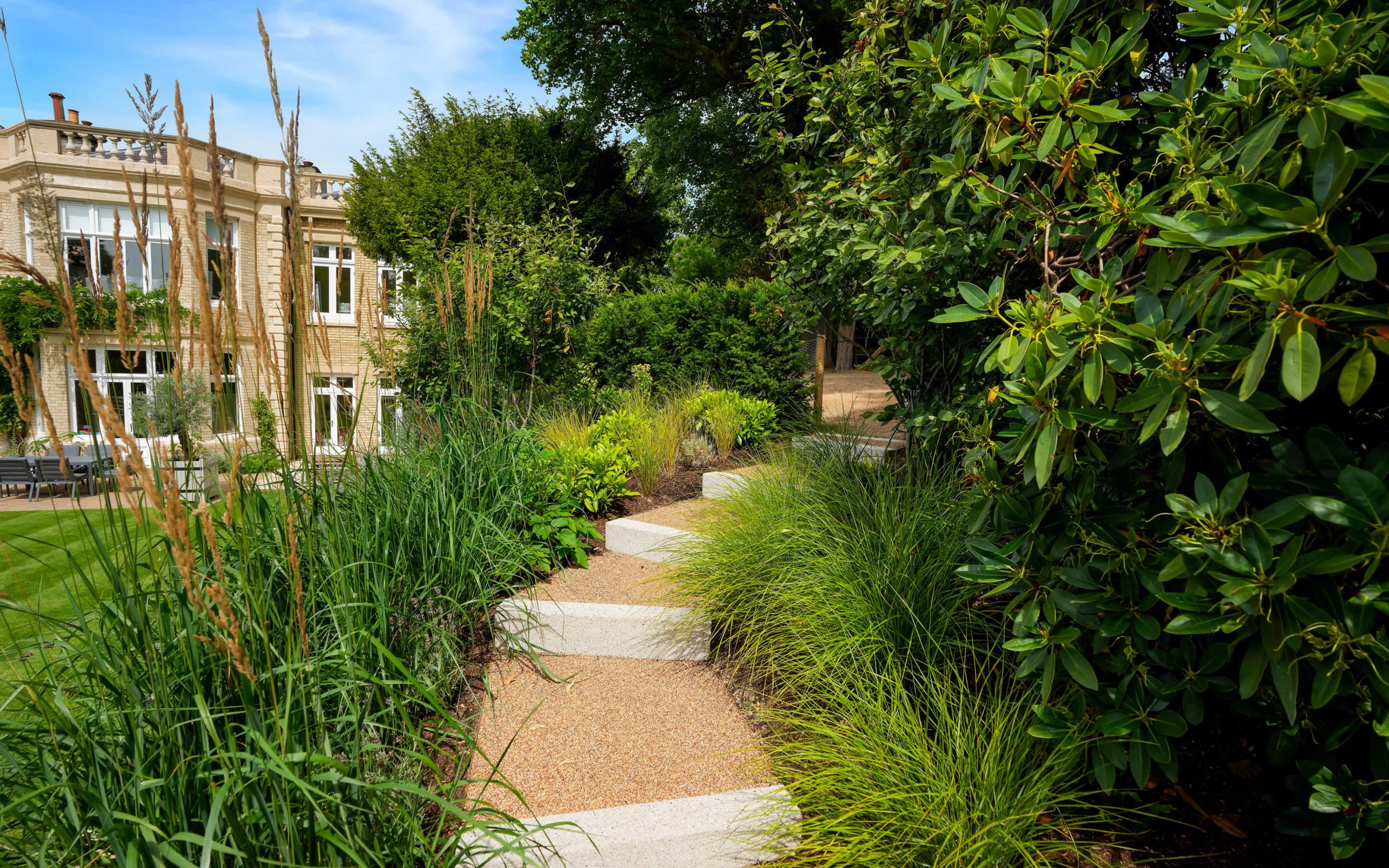Planning a Pathway
We human beings are sometimes at the mercy of strong but hidden impulses which, if questioned about, we would struggle to explain and garden designers know one of these impulses is the urge to get from A to B in the straightest line possible.
Think about those times when you have risked wet shoes and socks to cut a corner from the car park to the office or when you’ve found yourself leaping nimbly over a small box hedge to get straight from your table in the pub garden back to the bar. We all do it and rather than fighting it this very normal impulse – which we call The Desire Line – this is something we garden designers factor into our ideas when we are first planning routes through and across a garden design. It may make us sound more like psychologists than gardeners/garden designers but understanding human behaviour is absolutely key to creating a garden that looks stunning and it functional too and one that may win all the award aesthetically but which fails to make the user or homeowner comfortable enough to want to spend time in the outdoor space.
Once we’ve considered our options taking into account shortcuts and the most expedient route from A to B when we are planning pathways, we then need to think about the dimensions of our paths and for this, we have a simple and really quite charming rule of thumb which is that we imagine two adults walking side by side, lost in thought or conversation, and needing a pathway or route across the garden that comfortably and easily accommodates them both.
To this end, when we are designing a path – unless it is a very rustic and meandering route at the bottom of the garden down to a stream or through a wildflower garden, we will be designing in dimensions wide enough for two people to walk, hand in hand. Our next challenge as designers is to imagine, source and integrate the right materials for the pathways that our clients will use to fully occupy and utilise the outdoor space we are creating for them.
A path that leads in a straight line from a formal brick patio dining area outside a stately home is going to look very odd and unseemly if we simply decide on simple rustic wooden stepping stones to lead the way to a grand and historic fountain. Equally, a herringbone red brick elaborate path is wasted at the boggy bottom of a garden where the only destination (and reason for walking that way) is the garden shed and compost bin. With these examples you can see how we start to think about our paths and routes across the outside space as an extension – as well as a reflection – of the type of property, how the space will be used, the reason for visiting that part of the garden and who is likely to be walking the path.

Here are some examples of the materials and mixed media materials we can consider for domestic paths across your garden:
Brick / Brick softened at the edges with planting / Wood / Wood and gravel / Gravel, in various sizes / Paving stones / Slate slabs / Decking / Stepping stones; natural or coloured
Introducing pathways to a garden design is not only an essential step in terms of dictating the flow of the garden, by which we mean how best to move around the space but also gives us an additional and sometimes unexpected dimension which is that we can also create entrances to walkways that offer attractive verticals. A pretty rose arch in a thatched country garden for example, will beckon us to walk through and beyond as will a stark steel pergola over a dark slate pathway.
And once we start looking at pathways as both an aesthetic as well as a practical component to our design, you can see they really are a critical part of any good garden design.